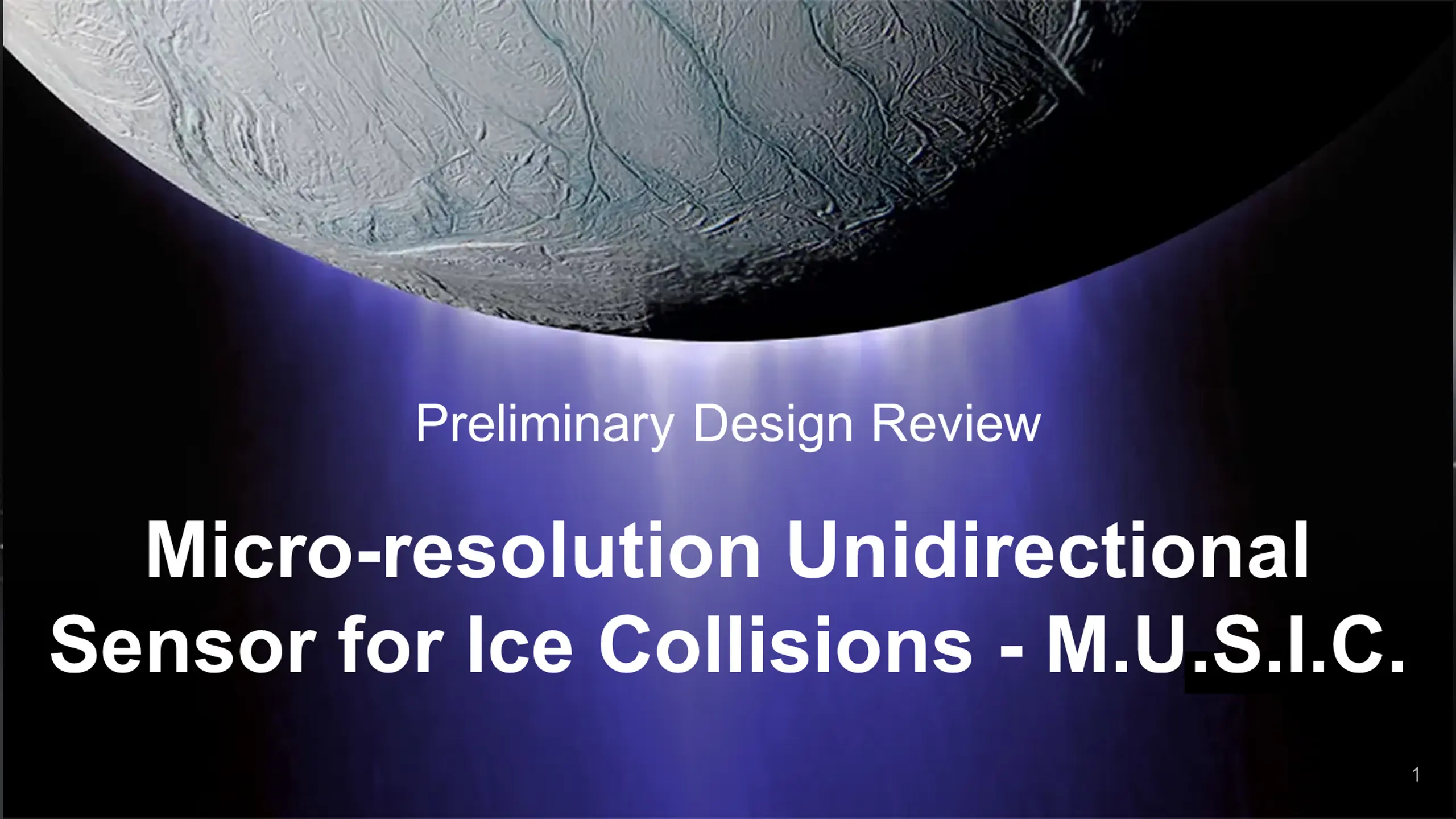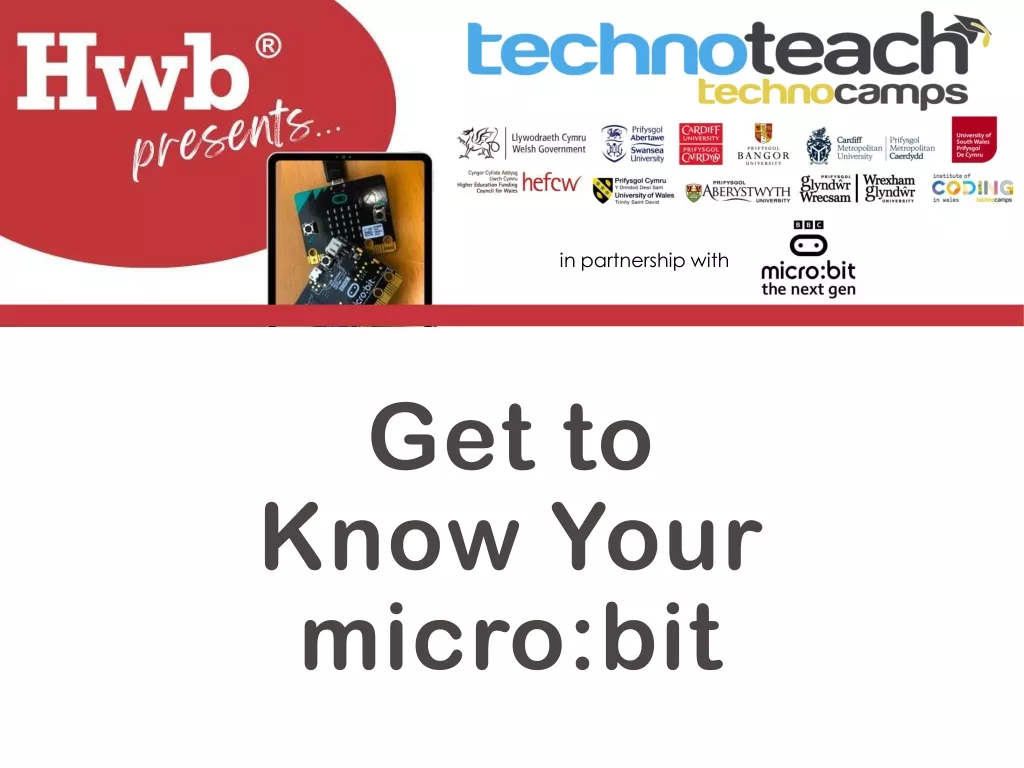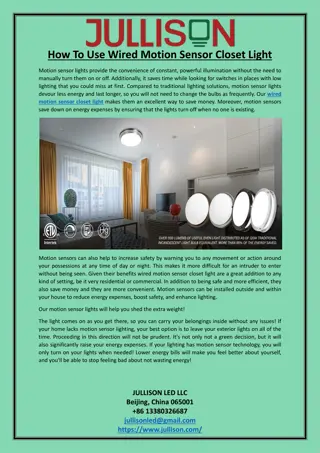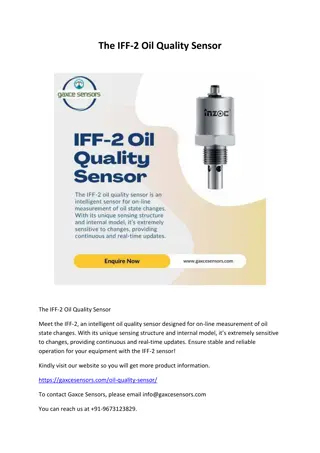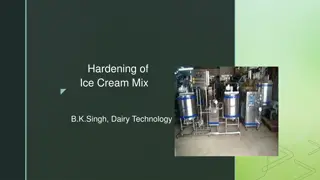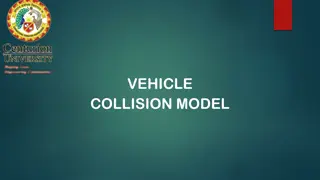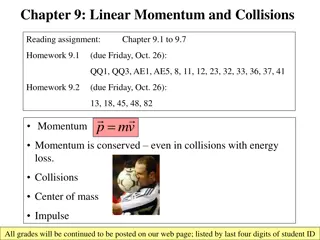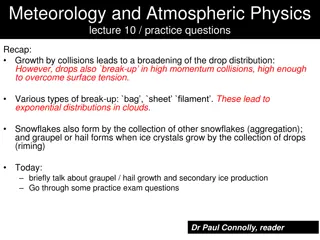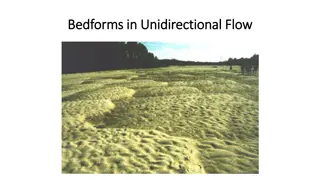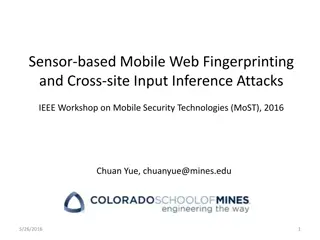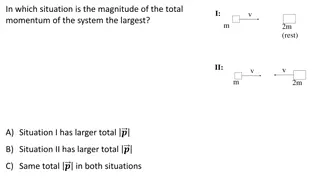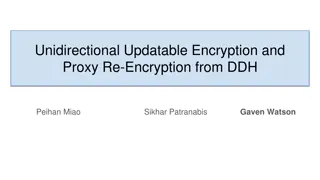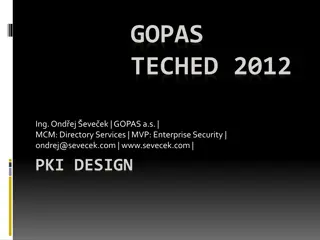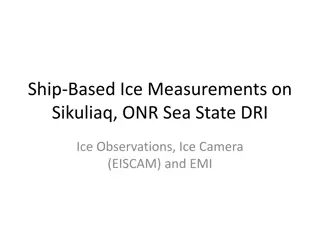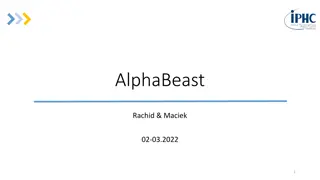Micro-resolution Unidirectional Sensor for Ice Collisions
Develop a micro-resolution unidirectional sensor for detecting ice collisions. The team members include Tim Shaw, Alec Macchia, Cyrus Nichols, Sophia Trissell, Riley Gordon, Bradley Bishop, Tyler Schwinck, Garrett Lycett, and Jarrett Bartson.
Download Presentation

Please find below an Image/Link to download the presentation.
The content on the website is provided AS IS for your information and personal use only. It may not be sold, licensed, or shared on other websites without obtaining consent from the author.If you encounter any issues during the download, it is possible that the publisher has removed the file from their server.
You are allowed to download the files provided on this website for personal or commercial use, subject to the condition that they are used lawfully. All files are the property of their respective owners.
The content on the website is provided AS IS for your information and personal use only. It may not be sold, licensed, or shared on other websites without obtaining consent from the author.
E N D
Presentation Transcript
Preliminary Design Review Micro-resolution Unidirectional Sensor for Ice Collisions - M.U.S.I.C. 1
Team Members Tim Shaw Alec Macchia Cyrus Nichols Sophia Trissell Riley Gordon Bradley Bishop Tyler Schwinck Garrett Lycett Jarrett Bartson 2
Project Overview 3 Image courtesy of NASA https://solarsystem.nasa.gov/resources/17737/enceladus-plume/
Enceladus and Water Moon of Saturn with water under a surface of ice Tidal heating causes water to escape in the form of geysers Geyser particles may contain organics 4 Enceladus Images and Diagrams courtesy of NASA JPL Photojournal: https://photojournal.jpl.nasa.gov/figures/PIA19656_fig1.jpg https://photojournal.jpl.nasa.gov/jpegMod/PIA21442_modest.jpghttps://photojournal.jpl.nasa.gov/jpegMod/PIA14858_modest.jpg
ASTROBi Mission Profile ASTROBi wants to take samples of the plumes of Enceladus to be viewed with a microscope Proper positioning within the plume is critical to obtain the correct sample 5
Objectives Simulate the detection process Detect the presence of small particles Process the data from the impacts for: Plume density Particle sizes Particle velocities 7
Functional Block Diagram 8
CPEs Critical Project Element Reasoning Sensor Necessary for data collection Data Analysis Noise reduction, impact data processing Testing/Simulation Software Assisting/predicting testing results 9
Level 1 Requirements Operational in bench conditions Survive repeated impacts from small particles Provide impact data over given window of time 10
Limiting Requirements Trade Impact Complexity 1 Watt power consumption Size of the particles to be detected Sensitivity Cost Sensitivity Testability Rate of particle impact 11
Trade Study 12
Particle Sensor Key Constraints: Key Requirements: Size - 10x10x10cm volume 1W power consumption Predictability Cost Sufficient sensitivity Testability Survivability 13
Trade Considerations Design Choices Mission environment Magnitude of plate deflection Feasibility of testing Complexity of components Plate deflection Laser diffraction Capacitor voltage Piezoelectric 14
Capacitance Laser Diffraction Measure change in voltage across a Measure angular variation of scattered light variable capacitor as a laser beam hits particle to determine size Plate Deflection Piezoelectric Measure the deflection of the plate with respect to time Use a material that creates a voltage when it deforms 15
Trade Metrics Metric Weight 1 2 3 Sensitivity 0.4 > 10 m > 1 m < 1 m Complexity 0.15 Built from scratch Some COTS part All COTS parts Testability 0.2 Extensive Testing (Laboratory) Complex Bench- top Bench-top Cost/Market Availability 0.15 >$2000 $500-$2000 <$500 Resilience 0.1 Could break during use Could break if mishandled Difficult to break 16
Trade Results Metric Weight Piezoelectric Capacitance Laser Diffraction Photoelectric Sensitivity 0.4 1 2 3 2 Complexity 0.15 2 1 1 2 Testability 0.2 3 3 2 3 Cost/Market Availability 0.15 3 3 2 2 Resiliency 0.1 1 2 1 3 Score 1.85 2.2 2.15 2.3 17
Results and Current Design Space Means of Detection: Plate deformation Power: Currently Low Concern Sensitivity: Plausible Size: No Concern 18
Further Trade Exploration Capacitor noise levels Vacuum environment Laser interferometer Material thickness/Machinability Noise mitigation 19
Preliminary Risk Assessment Risk Matrix Very Likely Likely 5 1 1. Sensitivity of sensor (20) L i k e l i h o o d 2. Data processor failure (10) Possible 3 3. Power over 1W (9) Unlikely 2, 4 4. Cost over budget (10) Very Unlikely 5. Can t survive vacuum (12) Insign. Minor Mod. Major Severe Consequence 20
Modeling Models will assist prototyping ANSYS plate deflection Spring-mass analysis 22
Tabletop Testing: Level 1 Objectives: Verify baseline functionality outside of vacuum environment Characterization of noise and interference Test detection using available particles (salt, sand, etc) 23
Vacuum Chamber Testing: Level 2 In-State Testing CU Autonomous Vehicle Systems (AVS) Lab Contact: Dr. Hanspeter Schaub Objectives: Survivability and functionality in vacuum environment Further characterization of setup noise 24
Vacuum Chamber Testing: Out-of-state RadNet Medical Imaging Particle Accelerator Objectives: Test mission functionality Development of procedure 25
Advanced Studies Cost function - price and construction Analysis of construction parameters Data processing Further risk 26
Level 1 Requirements The sensor shall fit inside the vacuum chamber testing apparatus. The detection hardware shall be capable of operating at laboratory bench conditions. The sensor shall be able to survive repeated impacts from small ice particles. The vacuum portion of the sensor shall not use more than 1W of power. The sensor shall mitigate vibrations inside the vacuum chamber. The sensor shall be able to detect impacts with similar momentum to ice particles prior to vacuum chamber testing. The system shall be able to provide data over a given window of time to the user. The system shall be able to measure the noise floor and be able to take this into account when measuring impacts. The system shall be able to determine the rate of impacts. 29
Pros: - - - Commercial sensors available Simple to model Data is directly related to the applied force Plate Deflection Cons: - - Need very high resolution (nm) Expensive Measure the deflection of the plate with respect to time Risks: - - Mechanical Stability Interfacing with COTS components 30
Plate Deflection Measurement From simulations, we expect between 100s of nm to 10s of m displacements Sensors on market: 1) Photoelectric: Resolution as high as 0.2 m Resolution: 8um 0.2um 1um 1) Interferometer: Resolution in nm range 31 No other sensor types on market sensitive enough to detect displacements
Pros: Capacitor Voltage Measurement - High sensitivity (down to 100s of nm) at low cost Cons: Measure change in voltage across a variable capacitor - - Difficult to model Cannot differentiate between single and multiple impacts Risks: - - Complex Mechanical stability 33
Laser Particle Diffraction Laser hits particle and light propagates from the edges Size of particle affects the angle and intensity of the scattered light Benefits: Wide dynamic size range, Flexible sample types, Fast measurements, Easy to interpret, Sensitivity (~30 nm) Cons: Assumes hard spherical model, Optical concentration range, Expensive (Self-build?) Risk: Possible error due to different particle shapes and accuracy of self-built sensor 34
Laser Particle Diffraction Measure concentration of particles via scattering of a laser Pros: - - - Wide dynamic size range Fast measurements Sensitivity ~10 nm Cons: - - - - Assumes hard spherical particles Expensive, unless self-built Power Complex Risks: - High possibility of error in data 35
Pros: Piezoelectric - - - Commercially available Fast response time Data is directly related to the applied force Use a material that creates a voltage when it deforms Cons: - - - Limited sensitivity Low design flexibility Cannot differentiate between single and multiple impacts Risks: - Required sensitivity may not be achievable 36
Sensitivity Analysis Piezoelectric Capacitor Laser Diffraction Plate Deflection Sensor Type Min particle size: Photoelectric: 0.2 m uv/um mv/um Sensitivity Interferometer: 0.5nm 10nm diameter 37
Impact rates 50
